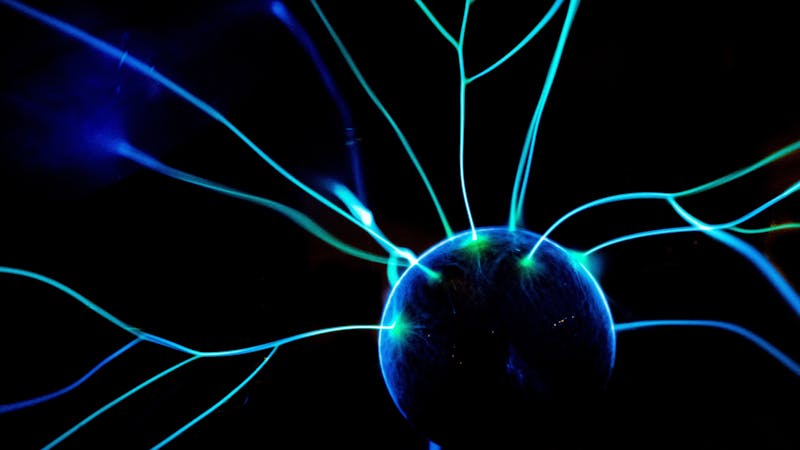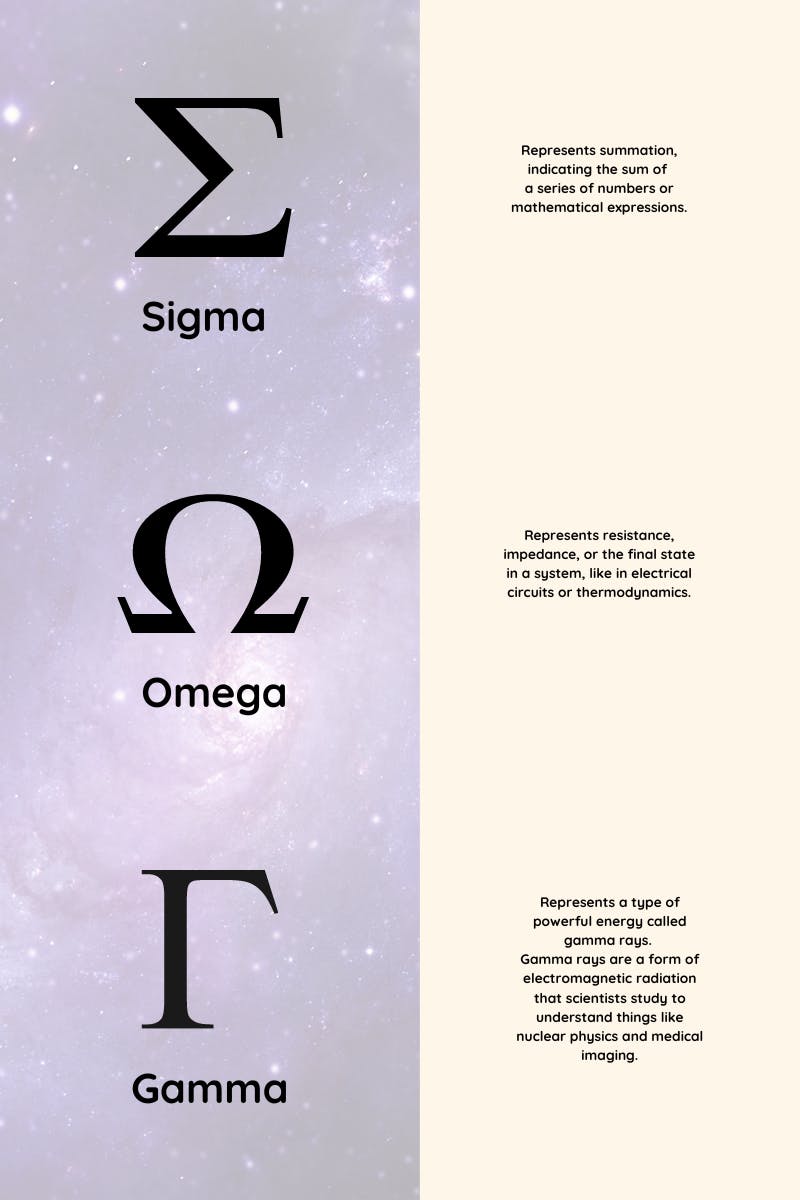Wordplay in Science! Discovering the Hidden Meanings of Scientific Words

Language is an extremely powerful tool that helps humans understand the world, and nowhere is this more evident than in the realm of science. Behind the seemingly complex and abstract terminology used in scientific disciplines lies a hugely rich tapestry of wordplay, letter abbreviations, hidden meanings, and linguistic connections.
Embark on a fascinating journey into the etymology of scientific terms and uncover the stories behind their origins, as well the meaning behind examples of scientific vocabulary we use every day, words you might not know the meaning of, and scientific words for the future, as well as scientific terms resources for kids to learn about!
Prepare to be enthralled as we uncover the playful side of science, where linguistic artistry meets intellectual rigor.
The Science of Letters
Have you ever stopped to ponder the science behind these seemingly simple symbols that we use daily? Behind every letter lies a fascinating world of linguistics, cognitive psychology, and cultural evolution.
The science of letters, also known as graphetics or Graphemics, is a multidisciplinary field generally related to studying the language of signs, shapes, and symbols and how over time, we have taken these to create the world's writing systems.
Throughout human civilization, there have been fascinating examples of ancient writing systems like hieroglyphics, Linear B in Mycenaean Greek, and the still-used Han system, where symbols, visual imagery, and characters replace the Latin alphabet that many countries adopt a version of today.
A few good examples of letters in science are algebra symbols adopted throughout the fields of science and mathematics, where characters have become a better way to represent equations and hypotheses.
The History of Scientific Words
As scientific understanding and writing systems have developed and matured, new terms and concepts have been coined, and existing words have been adapted and repurposed to describe emerging ideas and new discoveries. But where did it all begin?
Ancient civilizations, like the Ancient Greeks, left us with an impressive legacy of scientific terminology. In their thirst for knowledge, ancient philosophers, mathematicians, and important figures like Aristotle, Archimedes, Pythagoras, and Hippocrates coined some of the most important scientific words now in our daily lexicon and classrooms.
From the term, chemistry supposedly evolved from the term "alchemy," which some suggest came from the Ancient Egypt land of the "black soil," or the Greek khemeia, to the gift of "ologies" from the Greeks, meaning the "study of," biology (study of life), cosmology (study of the universe) genealogy (study of family history and lineage) or nephology (study of clouds) - we've been gifted a lot of conceptual vocabulary.
Closer in history is the development of the framework for the periodic table of chemical elements, described by UNESCO "as a window to the universe."
As we know it, the modern periodic table was developed from previous frameworks in 1869 by Russian chemist Dmitri Mendeleev, and it contains a set of letters that represent chemical elements in rows (periods) and columns (groups) according to their atomic number. It is arguably one of the most important illustrations of how language and science combine.
List of Essential Scientific Vocabulary
With the history of scientific language and terms in mind, here is a handy collection of fundamental terms and phrases used across different scientific fields of study, some of which we use on a daily basis and that have developed meaning over time.
- Control: Early 15th century, meaning to check the accuracy of, verify, or exercise control over.
- Conclusion: finishing of an event, experiment, or closure of ideas.
- Analysis: analyzing or dissecting a complicated topic into smaller parts
- Data: facts, figures, or statistics collected to draw conclusions or for reference.
- pH: Meaning the potential of hydrogen, a measure of acidity or alkalinity.
Scientific Words We Use Everyday
- DNA: Abbreviation for deoxyribonucleic acid, which carries genetic information and determines our inherited traits.
- Virus: A tiny infectious agent that can cause diseases in humans, animals, and plants.
- Antibiotic: A medication that inhibits the growth of or destroys bacteria, commonly used to treat bacterial infections.
- Gravity: The force that attracts objects toward each other, keeping us grounded on Earth and governing the motion of celestial bodies.
- Photosynthesis: The process by which plants convert sunlight, water, and carbon dioxide into energy-rich molecules, releasing oxygen as a byproduct.
- Allergy: An immune system response to a usually harmless substance, resulting in symptoms like sneezing, itching, or difficulty breathing.
- Atom: The basic unit of matter, consisting of a nucleus (composed of protons and neutrons) surrounded by electrons.
- Energy: The ability to do or cause change. It exists in various forms, such as kinetic, potential, thermal, and electrical energy. We use energy to mean a lot of different things.
- Acid: A substance with a pH less than 7, characterized by its ability to donate protons or accept electrons. Lemon juice, vinegar, and limes are acidic.
- Ecosystem: A community of living organisms (plants, animals, and microorganisms) interacting with each other and their environment in a particular area.
- Hypothesis: A prediction or explanation based on experimentation, observation, or existing evidence.
Scientific Words You Might Not Know Existed
- Quasar: A celestial object that emits exceptionally large amounts of energy and is believed to be powered by supermassive black holes.
- Tardigrade: Also known as a "water bear," it is a microscopic, water-dwelling animal known for its ability to survive extreme conditions, including high pressure, radiation, and even the vacuum of space.
- Chromatophore: Specialized cells in many animals, such as chameleons and octopuses, contain pigments that allow these animals to change color and camouflage.
- Myrmecology: The study of ants, including their behavior, classification, and ecological roles.
- Cryogenics: The branch of physics and engineering that deals with the production and effects of very low temperatures.
- Pseudopseudohypoparathyroidism: A super rare genetic disorder characterized by physical features like a round face, short hand bones, and a shorter stature.
- Magnetosphere: The region surrounding a planet, such as Earth, influenced by its magnetic field, deflecting charged particles from the sun and protecting its surface.
- Radiotelemetry: The technique of using radio waves to remotely monitor and track data from sensors or instruments implanted in animals or other objects.
- Bioluminescence: The ability of certain organisms, such as fireflies, deep-sea creatures, and some fungi, to produce light through chemical reactions within their bodies.
- Formication: Physical sensation of small insects, crawling, in, on, or under the skin.
- Snap, Crackle, and Pop: One of the sixth higher derivatives of position in time in classic mechanics and physics.
Scientific Words for the Future
- Augmented Reality (AR) Interfaces: Interfaces that overlay virtual information and objects onto the real world, enhancing perception and interaction in fields like education, entertainment, and medicine.
- Artificial Intelligence (AI): The development of intelligent machines that can perform tasks that humans usually assume.
- Bioprinting: The process of creating three-dimensional biological structures or tissues using 3D printing techniques and living cells to generate functional human organs for transplantation or drug testing.
- Cyberorganization: Integration of technology and biological systems, often referring to merging human and machine intelligence or creating hybrid systems where digital and organic components coexist.
- Neuroprosthetics: Devices or systems that interface with the nervous system to restore or enhance sensory, motor, or cognitive functions in individuals with neurological impairments or disabilities.
- Datafication: Process of transforming various aspects of the physical world, human behavior, or processes into quantifiable and analyzable data, often facilitated by sensors, algorithms, and advanced data analytics.
- Cryonics: The preservation of the human body or brain at ultra-low temperatures after death, hoping for future revival and restoration of life using advanced medical technologies that don't currently exist.
- Fusion Energy: The generation of clean and abundant energy by harnessing the power of controlled nuclear fusion, which involves merging atomic nuclei to release a tremendous amount of energy, similar to the process occurring in the Sun.
Science Terms Resources For Kids
Teaching kids about these difficult concepts can be tricky. See if any of these organizations or websites could help explain specific scientific language better.

BrainPOP
Ignite a love of learning with BrainPoP. A science standard-aligned curriculum.
https://www.brainpop.com/Science Buddies
Improve your scientific language know-how with STEM resources and projects, and practice hypothesizing your results.
https://www.sciencebuddies.org/Science Vocabulary
Join Little Bins for Little Hands, and download their list of simple science terms for kids. You can save them for later when you're experimenting or writing like a scientist.
https://littlebinsforlittlehands.com/science-terms/Wow, Science!
Help kids learn science vocabulary inside and outside the classroom with Wow Science! It's UK-based, but its e-learning resources are for everyone!
https://wowscience.co.uk/Mel Science Coding Boxes
Coding is the new scientific language on the block, so getting kids fluent in computer science and digital language has never been more important. Mel Science hands-on coding kits might be worth a try.
https://melscience.com/US-en/coding/Unveil The Playful Side of Scientific Language
Language often undergoes a transformation through scientific concepts or finds its origins within the realm of science. For instance, when children mention "Earth," they may inadvertently refer to soil or dirt instead of where we live. Similarly, "insects" has become synonymous with all types of creepy crawlies, disregarding the specific invertebrates of the Insecta class. Moreover, the evolution of language is mirrored in the term "chemistry," which traces its roots back to the practice of "alchemy." As language evolves and is played with, so does the expansive realm of science and scientific vocabulary.
References
- Deboleena M. Guharay - A Brief History of the Periodic Table
https://www.asbmb.org/asbmb-today/science/020721/a-brief-history-of-the-periodic-table - The Greatest Invention: A History of the World in Nine Mysterious Scripts Silvia Ferrara Translated by Todd Portnowitz Picador, 2022.
https://www.science.org/doi/10.1126/science.abo7807 - UNESCO - The Periodic Table of Chemical Elements: a window on the universe
https://www.unesco.org/en/articles/periodic-table-chemical-elements-window-universe - The Guardian - Picture this: Ologies you may not know
https://www.theguardian.com/technology/gallery/2014/jun/23/1

About the author
Sarah Perowne
Sarah Perowne is a language and education specialist with over 10 years of experience in teaching and content creation. She has worked with students of all ages in various teaching methods, including those with disabilities and ASD. She sports an acute knowledge and skillset in teaching English as a second/foreign language (ESL) English Language Arts and creating content for online teaching resources, articles, and podcasts.


